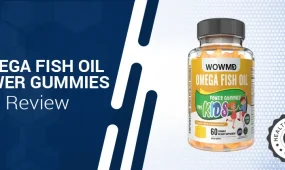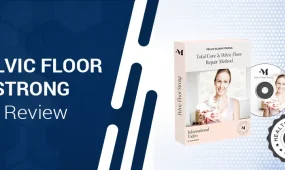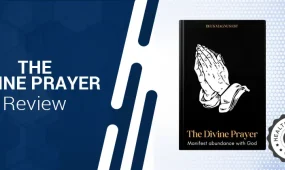According to the World Gastroenterology Organisation, gallbladder treatment is a growing need in North America. The unpleasant symptoms of gallbladder disease affect millions of men and women each year.
Are you one of them?
Cholecystectomy, also known as gallbladder removal surgery, is often presented as a fix for gallbladder disease, including gallstones and pain. However, life after gallbladder removal can bring its own discomfort and digestive issues.
Today, doctors and dieticians know more about using focused diet and lifestyle improvements to promote excellent digestion and reduce the need for surgical gallbladder treatment.
Does the word “diet” send you into a panic?
Don’t worry, these healthy tips won’t interfere with delicious meals, but they might help you enjoy comfortable digestion again.
Gallbladder Treatment – Understanding Cholecystitis and Digestion
What role does your gallbladder play and what is gallbladder disease?
This little hollow organ is located under the liver, where it partners to complete a few critical tasks.
Your liver secretes bile, a greenish fluid essential to emulsify and digest fats you eat. Bile also ensures you can utilize fat-soluble vitamins such as A, D, E and K. Your bile contains cholesterol, salts, pigment, and concentrated enzymes.
This high-powered fluid is stored in your gallbladder to be released as needed.
So, when do you need it?
Cholecystokinin is the hormone released into the top of your stomach (duodenum) while you’re enjoying a meal. Along with hydrochloric acid, it signals your gallbladder to release the right volume and concentration of bile for fat digestion.
Your gallbladder squeezes to express bile then gradually fills up again. Several factors might reduce regular emptying, which inevitably leads to gallbladder symptoms.
Cholecystitis (ko-ley-sis-TIE-tis) is the medical term for inflammation of the gallbladder. It has several causes but often leads to lower functioning.
What are gallstones?
Imbalanced bile components may form crystals and small pebbles inside the gallbladder or ducts. In many cases, gallstones sit unnoticed and symptom-free. It’s only when one of these granules shifts into the gallbladder opening, or blocks a duct, that pain results.
Have you heard of gallbladder attacks?
Perhaps you’ve experienced the gnawing, aching pain of spasms related to stones. Ranging in size from sand to golf balls, the odd stone can lodge in an opening when the gallbladder contracts. Pressure on nearby nerves and irritation leads to severe pain, lasting between 15 minutes and a few hours.
Now that you know the connection between dietary fat and bile release, it’s easy to understand why some people experience gallstone pain after eating high-fat and fried foods.
Before gallbladder treatment, learn to recognize your symptoms
Do you think you may have symptoms of gallbladder dysfunction?
Even if you have no notable problems, knowing about risk factors can be enough reason to take action.
Read on to review the uncomfortable signs this organ is unwell. We’ll also list common risk factors for cholecystitis and gallstones so you can be proactive and take easy steps toward better health today.
- Biliary colic (gallbladder attack)
If you’ve ever had one of these unfortunate “attacks”, you know very well how they got their nickname. Painful symptoms may begin 1-2 hours after a fried or heavy meal and last from 30 minutes to a couple of hours.
Episodes also occur without food as a direct trigger, and many people awake late at night with cramping and nausea.
Gallbladder attacks can be felt in the upper, mid or right side of the abdomen. Described as sharp or cramping, the pain gradually peaks then fades.
The aching may radiate to the back or shoulder, which is often confusing, especially if it’s the first instance. Irritated nerves send signals all the way up the back, shoulder, and neck. In fact, surprising gallbladder symptoms send some people to the ER, fearing a heart attack.
Chest and arm pain are undoubtedly good reasons to see a physician, so don’t hesitate to seek urgent care if you’re concerned. Cholecystitis may lead to life-threatening problems if untreated.
- Gallbladder-related indigestion
Biliary dyskinesia is a term doctors use to describe lower than normal gallbladder function. When gallbladder contents are thickened and sluggish, or the walls are chronically irritated, symptoms related to inflammation appear.
- Upper abdominal pain after eating
- Nausea
- Gas and bloating
- Belching
- Mild indigestion or diarrhea
For many, the above gallbladder symptoms come and go. They can be attributed to other issues, so you may be left guessing if these annoyances relate to your gallbladder or something else.
The good news is, nearly anyone can make choices to benefit the gallbladder before symptoms become severe.
Are you at risk?
If you fall into any of the following categories[1], you may be prone to developing gallstones or requiring gallbladder treatment:
- Over 50
- Female
- Pregnant (estrogen increases influence gallstone formation)
- Experiencing menopause
- Family history of gallstones (male or female)
- Obese
- Diabetes
- Taking certain prescription medications
- Native American or Mexican American ancestry
DIY gallbladder treatment – What can you do to support digestion today?
Natural gallstone and gallbladder remedies are marketed all over the internet, but some of them are invalid.
It’s especially critical to know that if you have severe signs of infection or blockage, you need to seek medical attention, not rely on home remedies.
There are food and activity choices to support liver and gallbladder function, so you can enjoy eating comfortably again.
You may not be able to eliminate large gallstones already formed, but prevention and healthy bile flow are achievable.
Here are some changes most people can safely make:
1. Reduce fat, especially harmful fats
Healthy fats include avocado, flax, hemp, coconut oil, and olive oil. Wild-caught fish, grass-fed butter and various nuts are also excellent sources of those essential fatty acids needed for optimal health.
Conversely, saturated, hydrogenated and toxic fats are challenging to digest and lead to high cholesterol levels.
Western diets containing refined carbohydrates and limited fiber make ideal body mass index (BMI) hard to achieve.
You’ll be pleased to know you can eat and remain satisfied while you lose weight. Begin by switching the type of fat and calories you consume for healthier ones.
2. Add bitter greens
This is a big one. You can’t get enough of these superfoods.
These plants can boost bile secretion from your liver to flush away sludge and tiny crystals while keeping things flowing. They also ensure you have adequate fat-digesting bile available with meals.
3. Add fruits and veggies
We’ve all heard advice to eat more veggies and fruit. Aside from numerous body benefits, many, like citrus fruits, can improve bile flow. They’re also antioxidant, healing and support healthy liver function.
Jerusalem artichoke and beets are two of the top-recommended liver supporting super-veggies. Signs of poor digestion like cramping, gas, bloating and belching are often reduced when adding more of these liver-friendly nutrients to the diet.
4. Apple cider vinegar and lemon
There’s not as much conclusive evidence to show ACV or lemon juice are effective gallbladder treatments; however, many people swear they can calm gallbladder attacks or reduce them when consumed daily.
Though they aren’t cures and don’t replace medical attention when needed, these additions to your diet might provide some symptom relief.
5. Lose excess weight
Being overweight means your liver produces more cholesterol than can form stones. Sometimes men and women resort to crash dieting, also known as deprivation dieting, to lose weight fast. There are numerous reasons to avoid this tactic.
One of the more immediate issues with skipping meals is that avoiding fat completely reduces gallbladder motility, causing sludge to build up.
You don’t need to starve yourself (good news!) and it’s a lasting weight loss solution. Instead, reducing processed fat and shedding weight the gradual, slow way will be safe and more rewarding in the long run.
6. Exercise and stretch to keep your organs functioning smoothly
You may need to check with your physician before increasing physical activities.
Luckily, no matter their fitness level, men and women of all ages can usually do gentle yoga postures, and they are some of the most effective exercises for gallbladder treatment.
Poses believed to stimulate internal organs and improve digestion, include:
- Sun salutations
- Seated forward bend (Pachimotasana)
- Shoulder stand (Sarvangasana)
- Locust Pose (Shalabhasana)
- Bow Pose (Dhanurasana)
- Cobra Pose (Bhujangasana)
Yoga is a good option for a diverse population because each pose can be adapted, softened and adjusted to suit abilities. Start slow and sign up for classes with an instructor if you need help getting started on the right foot.
Gallbladder treatment before surgery- you can take charge early
Inevitably, some people will develop worsening symptoms and chronic blockages that warrant gallbladder removal.
If that’s your situation, you can still make nutritional changes to help digestion run smoothly and account for missing bile regulation after.
Talk to your doctor or dietician about a gallbladder diet customized for you.
Hopefully, easing inflammation and encouraging ample bile flow with the above tips will help you avoid surgery. And once you’ve made these positive changes? You may find there’s an extra bounce in your step and revitalized glow throughout your body, too!
Sources
Health Insiders relies on peer-reviewed studies, academic research institutions, and medical associations. We avoid using tertiary references. You can learn more about how we ensure our content is accurate and current by reading our editorial policy.
[1] Sex and ethnic/racial-specific risk factors for gallbladder disease.







 This article changed my life!
This article changed my life! This article was informative.
This article was informative. I have a medical question.
I have a medical question. Ask a Question
Ask a Question
 This article contains incorrect information.
This article contains incorrect information. This article doesn’t have the information I’m looking for.
This article doesn’t have the information I’m looking for.